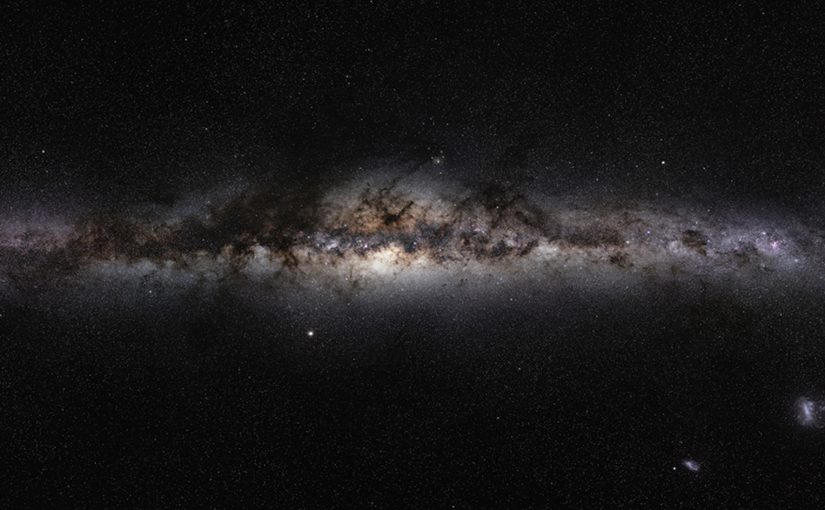Par une nuit sombre sans nuage, en été comme en hiver on peut voir une bande de lumière évoquant des nuages qui traverse le ciel.
C’est la Voie lactée.
La Voie lactée n’a en fait rien à voir avec le lait. C’est plutôt un terme désignant la lumière de millions d’étoiles si éloignées de nous que nous ne pouvons les voir comme des points lumineux individuels. Nous voyons leur lueur combinée, qui forme une bande lumineuse brillante et floue.
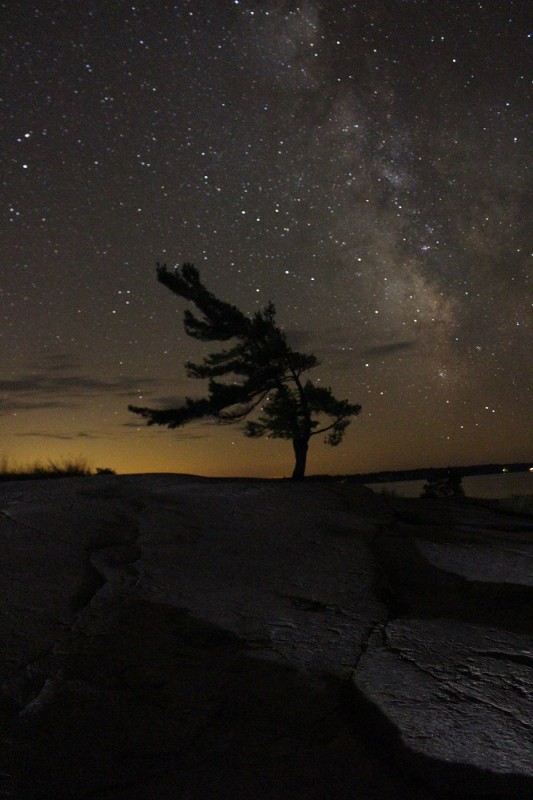
Les anciens Grecs ont peut-être spéculé à ce sujet, mais c’est Galilée qui, à l’aide de son « tube optique », a découvert que la lueur de la Voie lactée provenait d’étoiles. Galilée n’a pas inventé le télescope, mais il est le premier que nous connaissions qui ait utilisé un instrument semblable pour étudier les étoiles.
Dans la photo ci-dessous, une partie zoomée de la Voie lactée révèle les myriades d’étoiles qui la constituent.
See if you can see the Summer Triangle in the zoomed part (suggestion: Deneb is on the left, Altaïr in the bottom right with Vega above and to the left of the center in the zoomed image).
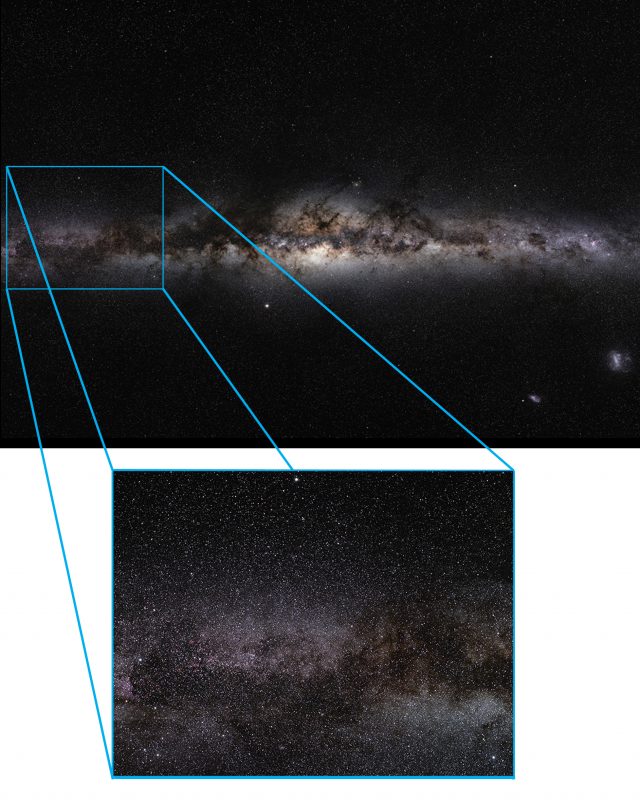
In a very, very distant galaxy
The Milky Way is both the strip of light evoking the clouds we see, and our galaxy.
It is difficult to understand that this strip of light is actually a galaxy, particularly because we are in the galaxy that is the Milky Way and that we are in orbit around its center.
Since no one has yet traveled beyond the Milky Way, we need to conceptualize our galaxy and our position within it from what we see from other galaxies.
We also use what we can measure and understand thanks to the many types of technologies, observations and theories that have been produced over the last centuries.
The example of the plate
To better understand the Milky Way, we need to imagine that we are looking at it from the outside, then placing ourselves above it to see its structure.
To do this, imagine two plates stacked one facing the other (photo below left). This roughly represents the shape of our galaxy, the Milky Way, seen from the outside.
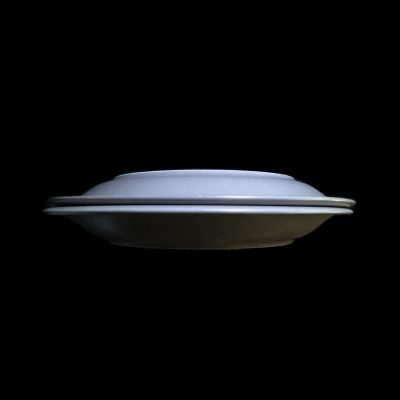
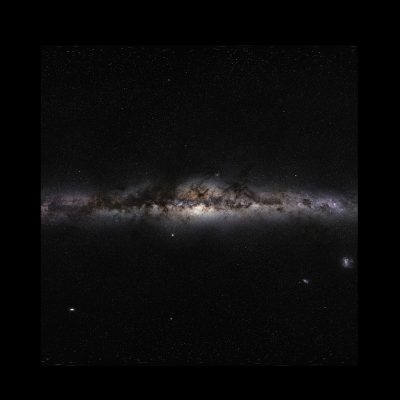
This evokes the shape that we see in the photo on the right, which was taken by the European Southern Observatory. From this point of view, the Milky Way has the shape of a flattened disc curved in the center.
Now imagine that we are traveling upwards, beyond the top of our galaxy.
In doing so, we will see the flattened disc extend outward, as in the case of our plate (below, left) and in this NASA conception of the Milky Way (below, right) .

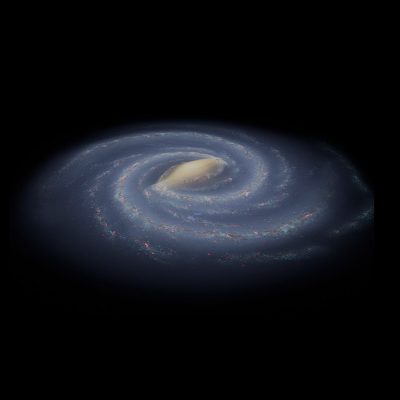
Finally, from above we see all the shape of the disc and all its splendors.
This is evident in the concept of NASA (below, right). On the left, we can only imagine the plates used to contain a Milky Way chocolate bar (Milky Way!)!
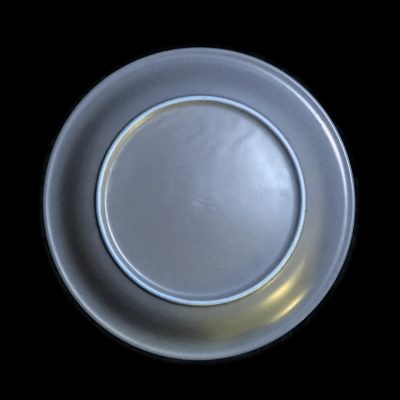
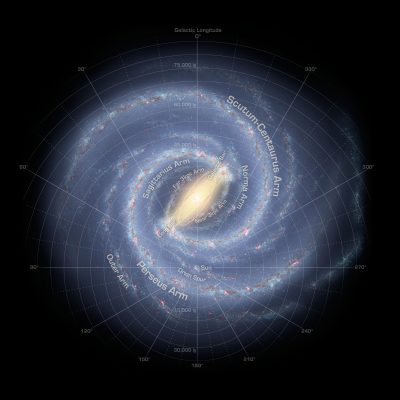
Everything about galaxies
Our galaxy is one of the 2,000 billion galaxies that we believe exist in the universe that we can see.
A galaxy is an oasis of hundreds of billions of stars, gases and dust in a relatively desert universe.
Between the galaxies, there is very little matter. But inside these, abundant matter produces stars, planets and life, at least here on Earth.
Galaxies are very diverse in shape and size. Our galaxy is of the “barred spiral” type. This is because its arms have a spiral structure, but a large central bar occupies a significant part of the central part.
The Milky Way has at its center a super-massive black hole. This affects the stars and other constituents of the nucleus.
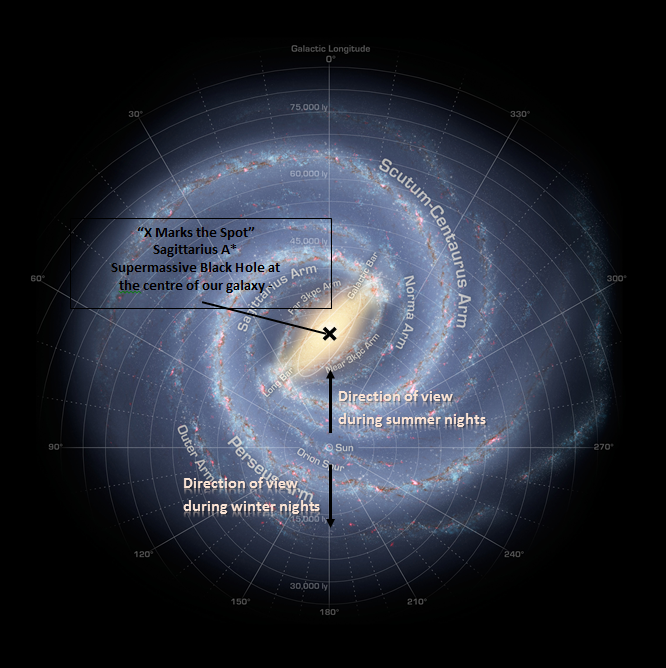
The Milky Way is approximately 100,000 light years in diameter, and approximately 20,000 light years thick. The sun and all objects in our solar system are about halfway between the center and the end (about 25,000 light years from the center).
Like most galaxies, the Milky Way rotates slowly, and so do we. A full rotation lasts about 240 million years. As our sun was born about 4.6 billion years ago, we have made more than 19 rotations around the center of our galaxy.
Why the appearance of the Milky Way differs according to the seasons
Understanding our place in the Milky Way, as seen in the conceptual image of NASA (above), allows us to better understand why in summer the Milky Way is much brighter than in winter.
As the Earth revolves around the sun, we see different stars in the night sky at different times of the year. In summer, we look at the central part of the Milky Way (the center is to the right of our August constellation, Sagittarius).
However, during winter, we have made half of our rotation around the sun and, as a result, we are looking in the opposite direction compared to summer. This means that we are looking out of our galaxy and seeing much less of the structure of the Milky Way.
The dark skies of most of our parks will give the visitor a good view of the winter Milky Way, but it will be much less bright. One of the best times to contemplate the winter Milky Way is in the wee hours of the morning, just before dawn in the fall months.
